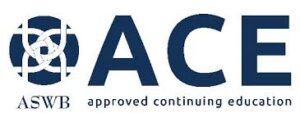 Date course created: October 2020
Date course created: October 2020
Featured Speaker: Linda Graham, MFT
People do learn and grow from meeting the challenges and adversities of life when they have the support, resources, and skills to do so. Helping clients strengthen their capacities – innate in their brains – to cope with any level of adversity – from a series of small annoyances to the troubles and tragedies that break their hearts to the utter catastrophes that change their lives forever – is at the heart of the therapeutic process. This training teaches clinicians the basics of harnessing the brain’s neuroplasticity to help clients learn more flexible and adaptive coping strategies and rewire negative coping patterns that block their recovery, learning and growth.
Learn the techniques that reverse the impacts of stress and trauma, shift the functioning of the brain out of reactivity, contraction, dissociation into more receptivity and openness to learning, and help clients once again trust other people as refuges and resources, discern new options, and deepen the meaning and purpose in their lives. The direct measurable outcome is resilience.
**This is a 4-CE noninteractive, self-paced online video course delivered in home study format via an industry-standard online learning platform**
Program Outline:
What Resilience Is
- Emerging definitions from behavioral sciences, modern neuroscience, the field of post-traumatic growth. Example from American Psychological Association:
- Resilience is the process of adapting well in the face of adversity, trauma, tragedy, threats or significant sources of stress.
How Resilience Is Developed…or Derailed
- Relevance of modern neuroscience: resilience is a capacity innate in human beings because it is innate in the human brain.
- Impact of attachment conditioning and trauma on the development of the brain and resilience…or not.
Role of Neuroplasticity
- Because the brain learns and rewires itself from experience, teaching clients the experiential tools that will strengthen the structures of the brain that support flexible and adaptive coping strategies, and rewire negative coping patterns that block their learning and growth – in ways that are safe, efficient, and effective.
Somatic Intelligence
- Use body-based tools to help clients reverse the impact of stress and trauma on their nervous system, returning to an inner sense of safety and equilibrium, their natural range of resilience.
Emotional Intelligence
- Help clients manage disruptive emotions, deepen self-compassion and empathy, and cultivate the positive emotions that antidote the brain’s negativity bias and shift brain functioning from contracted survival responses to openness to learning and growth.
Relational Intelligence within One’s Self
- Cultivate the self-awareness and self-appreciation that help clients heal form toxic shame, retire the inner critic, and recover their inner well-being.
Relational Intelligence with Others
- Teach the relational skills – reaching out for help, communicating without shame or blame, negotiating change, setting limits and boundaries, resolving conflict, repairing ruptures, and practicing forgiveness -that allow clients to trust other people as refuges and resources in difficult times.
Reflective Intelligence
- Adapt practices of mindfulness to help clients identify dysfunctional patterns of coping and discern new choices of behavior.
Post-Traumatic Growth
- Help clients apply evidenced-based tools to the five factors that predict genuine post-traumatic growth:
- Acceptance of reality (and the consequences of what happened);
- Resourcing with family, friends, friends, and community.
- Recognizing the positive in the midst of the difficult; finding the gifts in the mistakes.
- Writing a coherent narrative of the event within the larger life story.
- Appreciating the new opportunities and deeper meaning that emerges because of the difficulties, not just in spite of them.
Agenda:
00:00 – 01:00: Introduction and Overview
01:00 – 02:00: The Building Blocks of Resilience
02:00 – 03:00: The Lessons and Tools of Adversity
03:00 – 04:00: Practical Techniques for Cultivating Resilience
Objectives:
a). After completing this training, participants will be able to describe the differences between stressors (external events) and stress (internal reactions to external events) and the differences between stress and trauma (an overwhelm of defenses against stress or external events).
b). After completing this training, participants will be able to apply techniques of memory deconsolidation-reconsolidation to help clients change how they perceive and respond to memories of past traumatic events.
c). After completing this training, participants will be able to utilize practices of self-compassion that help clients counter the harshness of the inner critic and inner toxic shame, deepen their self-acceptance of all inner parts and voices, and strengthen the inner secure base of resilience.
d). After completing this training, participants will be able to incorporate techniques to cultivate positive emotions that help clients antidote the brain’s negativity bias and shift the functioning of the brain from contraction and reactivity to responsiveness and openness to learning.
e). After completing this training, participants will be able to teach clients to use five body-based tools to regulate automatic survival responses and return the body-brain to its natural physiological equilibrium.
f). After completing this training, participants will be able to teach clients three practices of guided visualization to create inner resources of resilience.
g). After completing this training, participants will be able to identify 7 steps of mindfulness practice that allow clients to monitor and modify their responses to experience.
Target Audience:
The target audience for this event includes psychologists, licensed clinical social workers, licensed counselors, MFT’s, and other clinical mental health professionals.
Instructional Level: Intermediate
Instructor(s): Linda Graham, MFT
Material Author(s): Linda Graham, MFT
For additional information about this course, the instructors, or the material authors, please contact Content Assistance at content@onlinececredits.com.
Course Materials & Delivery Method:
- Course materials – The course is composed of a recorded presentation and written materials (e.g. a slide deck and/or other worksheets, manuals, or handouts as provided by the instructor). The slide deck and any additional worksheets or handouts (as provided by the instructor) are made available inside the Lesson module after a course is purchased.
- Delivery Method – this course is a recorded asynchronous, self-paced webinar training, and there is no access time limit or due date to complete it once enrolled. The enrolled learner will stream the recorded presentation and view the materials from their internet connected device via an industry-standard online learning platform.
CE Approvals:

Online CE Credits has been approved by NBCC as an Approved Continuing Education Provider, ACEP No. 6795. Programs that do not quality for NBCC credit are clearly identified. Online CE Credits is solely responsible for all aspects of the programs.

Mind Works Professional Education, Inc. DBA Online CE Credits, #1974, is approved as an ACE provider to offer social work continuing education by the Association of Social Work Boards (ASWB) Approved Continuing Education (ACE) program. Regulatory boards are the final authority on courses accepted for continuing education credit. ACE provider approval period: July 23, 2024 – July 23, 2025. Social workers completing this course receive 4 clinical continuing education credits.
Other Helpful Information:
- Refund & Cancellation Policy – you may review this policy at any time by clicking here.
- Accessibility Accommodations – if you require a reasonable accommodation for any reason, please email your request to cc@onlinececredits.com
- Course Completion Requirements – 1.) View the entire Lesson module (accessible from the main course page), to include the embedded and/or linked presentation video(s), slide deck, additional materials, and/or links to any shared video clip(s) that may have been edited from the presentation video(s) to comply with copyright laws. 2.) Click into the Quiz module accessible from either the main course page or the Lesson page and complete the Quiz with an 80% or better pass rate. 3.) Complete the course evaluation – you’ll be sent to the evaluation automatically once you successfully pass the Quiz.
- Posttest Requirements – you must answer 80% or more of the Quiz questions correctly to pass. If you fail to pass the first time, you may attempt the quiz again until you are able to pass with a score of 80% or better. Quizzes are graded instantly and automatically by the learning management system once your attempt is submitted.
- Certificate of Completion – certificates of completion are automatically generated – downloadable from your Dashboard and emailed to you – once you view the Lesson materials and complete the Quiz and the course evaluation.
- How to Enroll – Login to the website first if you already have a user account. If not, you will create your permanent user account login information during course enrollment. Select the appropriate course library using the top menu of the website. Once inside your chosen course library, find and select your desired course to be taken to the main course page. Click the button on the top banner to enroll. When the order window pops up, enter your details and place your order. You will be emailed an enrollment confirmation message, and you’ll be sent to a landing page instructing you how to begin your newly enrolled course.
- System Requirements –
- Recommended Devices: Desktop, Laptop, or Tablet computer. (Note: Our platform is mobile responsive and may be fully accessed from a connected smartphone).
- Suggested Browsers: Updated version of Google Chrome, Microsoft Edge, or Apple Safari.
- Recommended Network: Home wifi, ethernet, or a public wifi with VPN (Note: agency or corporate networks are often equipped with restrictive firewalls that may adversely impact your experience on our platform).
- Recommended speed/bandwidth: Minimum download speed > 20Mbps and minimum upload speed > 6Mbps.
